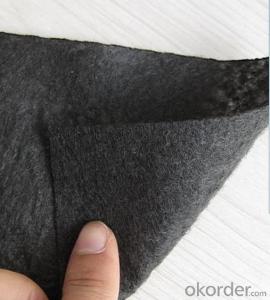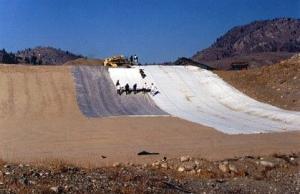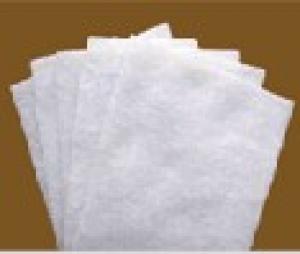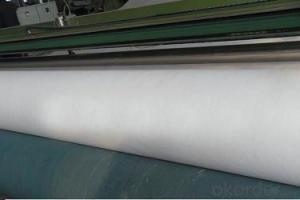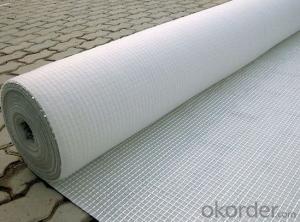Malla Geotextil Precio Needle Punched Nonwoven Geotextile for Road and Highway Construction
- Loading Port:
- Qingdao
- Payment Terms:
- TT OR LC
- Min Order Qty:
- 20000 m²
- Supply Capability:
- 1500000 m²/month
OKorder Service Pledge
OKorder Financial Service
You Might Also Like
Specifications of Needle Punched Nonwoven Geotextile:
Polyester Filament Needle Punched Geotextile/nonwoven
Fine permeability and filtering performance
Acid and alkali resistance
Features of Needle Punched Nonwoven Geotextile:
High strength, good capacity of elongation and high biology tolerance, alkali tolerance, acidity tolerance, weather resistance, good filtration and fine drainage capacity etc. With good cost performance, easy in construction and use effects.
Application of Needle Punched Nonwoven Geotextile:
1. Water conservancy projec: seawall, dike,river canal engineering;Reservoir reinforcement engineering; Reclamation engineering; Flood control engineering.
2.Highway,railway and airport project: soft foundation reinforcement; Slope protection; Pavement structure layer reflective crack prevention; Drainage system; Greening belt.
3.Electrical engineering : Nuclear infrastructure;Thermal power ash dam project;Hydropower project.
Technical Data Sheet of Needle Punched Nonwoven Geotextile:
| Index Spec. Article | 100 | 150 | 200 | 250 | 300 | 350 | 400 | 450 | 500 | 600 | 800 |
1 | Quality error in unit area,% | -6 | -6 | -6 | -5 | -5 | -5 | -5 | -5 | -4 | -4 | -4 |
2 | Thickness,mm≥ | 0.8 | 1.2 | 1.6 | 1.9 | 2.2 | 2.5 | 2.8 | 3.1 | 3.4 | 4.2 | 5.5 |
3 | Width error,% | -0.5 | ||||||||||
4 | Breaking strength,KN/m≥ | 4.5 | 7.5 | 10.0 | 12.5 | 15.0 | 17.5 | 20.5 | 22.5 | 25.0 | 30.0 | 40 |
5 | Elongation at break,% | 40~80 | ||||||||||
6 | CBR puncture strength,KN≥ | 0.8 | 1.4 | 1.8 | 2.2 | 2.6 | 3.0 | 3.5 | 4.0 | 4.7 | 5.5 | 7.0 |
7 | Effective aperture 090(095),mm | 0.07~0.2 | ||||||||||
8 | Vertical permeability coefficient , cm/s | K X (10-4-10-3) K=1.0~9.9(K=1.0~9.9) | ||||||||||
9 | Tearing strength,KN≥ | 0.14 | 0.21 | 0.28 | 0.35 | 0.42 | 0.49 | 0.56 | 0.63 | 0.70 | 0.82 | 1.1 |
FAQ:
What is the main application of Needle Punched Nonwoven Geotextile?
The main application of our Short Fiber Nonwoven Geotextile is as follows: The highway, railway, soil-stone dam, breakwater, airport, backfill soil of retaining wall, slope protection, etc.
Where is your main market?
Our main market is in Middle East, South America and some African countries.
What is your advantages for Needle Punched Nonwoven Geotextile?
One of the largest manufacturer of PP Woven Geotextile for Construction
with advanced equipment, big production capacity and excellent quality.
- Q: Fish tank white filter cotton toxic, is not geotextile, or non-woven Yeah
- Geotextile do fish tank filter, fish will die
- Q: How do geotextiles contribute to soil remediation?
- Geotextiles contribute to soil remediation by providing a physical barrier that prevents soil erosion, filters out contaminants, and promotes vegetation growth. They help in stabilizing slopes, controlling sediment runoff, and improving the overall quality of the soil by allowing natural processes to occur while minimizing the spread of pollutants.
- Q: How do geotextiles help with erosion control on slopes?
- Geotextiles provide erosion control on slopes by acting as a barrier that prevents soil erosion caused by wind and water. These textiles are permeable, allowing water to pass through while trapping soil particles, thereby stabilizing the slope and preventing erosion. Additionally, geotextiles enhance vegetation growth by retaining moisture and providing a protective layer, further reducing erosion on slopes.
- Q: 5KN or 50KN
- I answered someone else on this question 1. multiply the 1.5th of the expected value of the geotextile sample by the size of the geometric cloth. 2. If you do not know the expected value, it should have a standard tensile strength range, with the tensile strength multiplied by the cross-sectional area of geotextile (thick by the width) to find the force value. 3. If you do not know, it is recommended to choose 50KN or 100KN equipment. Of course, if you need to test the geotextile was cut into a width that is particularly small, then you can use a small amount of force, but it is recommended if you choose from 5KN and 50KN election 50KN good.
- Q: How do geotextiles help with load support in unpaved roads?
- Geotextiles provide load support in unpaved roads by distributing the load from vehicles more evenly across the road surface, preventing the formation of ruts and reducing the amount of settlement. They also help in stabilizing the subgrade by acting as a separation layer between the subgrade soil and the overlying base material, preventing the mixing and migration of fine particles. Additionally, geotextiles improve the overall strength and stability of the road by enhancing its resistance to deformation and improving its load-carrying capacity.
- Q: How do geotextiles contribute to the stability of railroad ballast?
- Geotextiles contribute to the stability of railroad ballast by acting as a barrier between the ballast and the underlying soil. They prevent the migration of fine particles from the soil into the ballast, reducing the risk of ballast contamination and subsequent track settlement. Geotextiles also provide reinforcement to the ballast, distributing loads more evenly and enhancing its overall stability.
- Q: Can geotextiles be used in coastal revetment projects?
- Yes, geotextiles can be used in coastal revetment projects. Geotextiles are commonly used in coastal engineering to reinforce and stabilize soil and sediment in coastal areas. They can be used as a filter layer to prevent erosion, as a barrier to control water flow, or as a reinforcement layer to enhance the stability of revetment structures. Geotextiles offer several advantages in coastal revetment projects, including improved durability, reduced maintenance, and increased resilience to wave action and tidal forces.
- Q: Can geotextiles be used in geogrid reinforced retaining walls?
- Yes, geotextiles can be used in geogrid reinforced retaining walls. Geotextiles are often used as a separation layer between the retained soil and the geogrid reinforcement to prevent soil particles from passing through the geogrid openings and to enhance the overall stability and performance of the wall.
- Q: How are geotextiles different from other types of geosynthetics?
- Geotextiles are a specific type of geosynthetic that are primarily used for separation, filtration, and drainage purposes in various civil engineering projects. Unlike other geosynthetics such as geogrids or geomembranes, geotextiles are made from woven or non-woven fabrics, which provide them with different physical properties and application capabilities. Geotextiles are generally more flexible, lightweight, and permeable, allowing for efficient water and gas flow while preventing soil erosion and promoting soil stabilization.
- Q: How do geotextiles contribute to the performance of geogrid-reinforced slopes?
- Geotextiles play a crucial role in the performance of geogrid-reinforced slopes by acting as a separation and filtration layer. They prevent the mixing of soil layers, allowing for effective load distribution and reducing the risk of soil erosion. Geotextiles also enhance the stability of the slope by providing additional tensile strength and promoting water drainage, thereby minimizing the potential for slope failure. Overall, geotextiles greatly contribute to the overall performance and longevity of geogrid-reinforced slopes.
Send your message to us
Malla Geotextil Precio Needle Punched Nonwoven Geotextile for Road and Highway Construction
- Loading Port:
- Qingdao
- Payment Terms:
- TT OR LC
- Min Order Qty:
- 20000 m²
- Supply Capability:
- 1500000 m²/month
OKorder Service Pledge
OKorder Financial Service
Similar products
Hot products
Hot Searches
Related keywords










